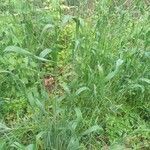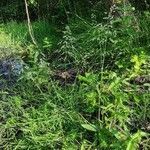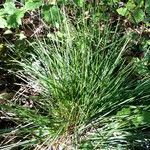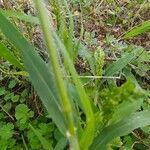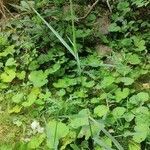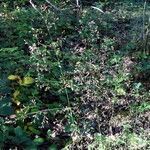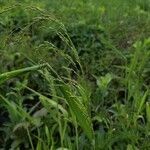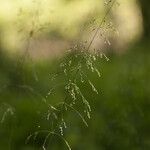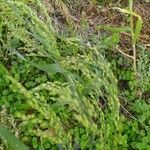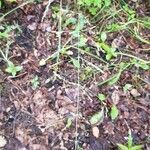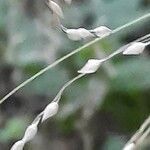Perennial, shortly rhizomatous. Culms loosely tufted, erect, slender, 0.9–1.5 m tall, smooth, glabrous, 3–5-noded. Leaf sheaths loose, slightly inflated, glabrous; leaf blades broadly linear to linear-lanceolate, thin, soft, 10–30 cm, 5–15 mm wide, glabrous, abaxial surface gray-green, adaxial surface green, margins scaberulous, apex acute; ligule lanceolate, 2–10 mm. Panicle ovate or pyramidal in outline, very lax, 10–30 cm; branches in clusters of up to 6, slender, flexuous, spreading or deflexed, smooth or scabrid, lower part bare. Spikelets 3–4 mm, gray-green or tinged with purple; glumes elliptic-ovate, scaberulous, margins white, apex acute; lemma glossy, milky-white when young, brown at maturity. Anthers 2–3 mm. Fl. and fr. May–Jul. 2n = 14, 28.
More
Glabrous and glaucous perennial 6–12 dm, erect from a bent base; ligules prominent and pale; main lvs 10–18 mm wide; panicle 1–2 dm; ovoid or pyramidal, the branches in fascicles of 2 or 3, widely spreading and bearing drooping spikelets beyond their middle; glumes scaberulous, ca 3 mm; 2n=14, 28. Rich, moist or dry woods; Que. and N.S. to Ont. and Minn., s. to n. N.J., W.Va., and Ill.; also in Eurasia.
A grass which keeps growing from year to year. It forms tufts. It grows 25-30 cm high and spreads 25-30 cm wide. The leaves are light green. They are soft and arch over. They are 30 cm long. The flowers are small and in open sprays.
It is a temperate plant. It does best in light shade. In Pakistan it grows between 2,000-4,000 m altitude. It suits hardiness zones 5-10. In Sichuan and Yunnan.
More
Damp shady woods, especially oak and beech, on heavy humus rich lime soils.
